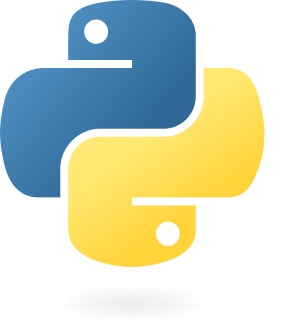How to Create a Programming Language in Python
If you’ve ever wondered how programming languages work or dreamed of creating your own, you’re in the right place. At Jacobisah Programming Hub, we specialize in making complex concepts easy to understand. Today, we’ll guide you through creating a basic programming language using Python.
Why Create a Programming Language?
Before we dive into the how, let’s address why. You might want to:
Gain a deeper understanding of compilers and interpreters.
Build a domain-specific language tailored to your needs.
Challenge yourself and enhance your coding skills.
Whatever your reason, creating a programming language can be both educational and rewarding.
Common Questions About Building a Programming Language
Do I need advanced coding skills? No, but basic programming knowledge is essential. Python’s readability makes it a great choice for this project.
What kind of programming language can I create? Start small. Focus on a simple language with basic operations like arithmetic and variable assignments.
Is it expensive or time-consuming? Not at all. With Python, you can prototype quickly and without extra costs.
Step-by-Step Guide to Creating a Programming Language in Python
1. Define Your Language’s Syntax
Think of syntax as your language’s grammar. Here’s an example of a simple syntax:
# Variable assignment
x = 5
# Print statement
print(x)
# Arithmetic operation
y = x + 3Start by outlining the rules for your language. For example:
Variables must start with a letter.
Support basic math operations like +, -, *, /.
Use
print()to display output.
2. Create a Lexer
A lexer (or tokenizer) breaks your code into smaller pieces called tokens. These tokens help your program understand what’s being written.
Here’s a simple lexer in Python:
import re def lexer(code): tokens = [] token_specification = [ ('NUMBER', r'\d+'), # Integer ('ASSIGN', r'='), # Assignment operator ('IDENTIFIER', r'[a-zA-Z_]\w*'), # Variable ('OPERATOR', r'[+\-*/]'), # Arithmetic operator ('PRINT', r'print'), # Print statement ('SKIP', r'[ \t]+'), # Skip spaces and tabs ('NEWLINE', r'\n'), # Newline ] token_regex = '|'.join('(?P<%s>%s)' % pair for pair in token_specification) for match in re.finditer(token_regex, code): kind = match.lastgroup value = match.group() if kind != 'SKIP': tokens.append((kind, value)) return tokens
Example usagecode = "x = 5\nprint(x)\n" tokens = lexer(code) print(tokens)
This Lexer scans the code and identifies tokens like numbers, variables, operators, and print commands.
3. Build a Parser
A parser takes the tokens from the lexer and organizes them into a structure your program can work with—usually an Abstract Syntax Tree (AST).
def parser(tokens): ast = [] for token in tokens: ast.append(token) return ast
Example usageparsed_code = parser(tokens) print(parsed_code)
The parser translates tokens into a format ready for execution.
4. Implement an Interpreter
The interpreter executes the code by reading the AST and performing the necessary operations.
def interpreter(ast): variables = {} for node in ast: if node[0] == 'IDENTIFIER' and '=' in ast: variables[node[1]] = ast[ast.index(node) + 2][1] elif node[0] == 'PRINT': variable_name = ast[ast.index(node) + 1][1] print(variables.get(variable_name, "Undefined variable"))
Example usageinterpreter(parsed_code)
This step makes your language functional by executing commands in real time.
5. Test Your Language
Write sample programs in your new language and test them. Debugging will help refine your lexer, parser, and interpreter.
Practical Example
Here’s a mini-program written in our custom language:
x = 10
y = x + 2
print(y)When processed, the output will be:
12Relatable Example: Learning by Doing
When I first started experimenting with language creation, I was overwhelmed. But I realized breaking it into smaller steps made it manageable. Just like solving a puzzle, you’re piecing together something unique. At Jacobisah Programming Hub, we’re here to guide you through such challenges.
Boost Your Skills With Jacobisah Programming Hub
Ready to take your skills to the next level? Join our workshops or explore our tutorials tailored for beginners and seasoned coders alike. Whether you want to deepen your Python knowledge or explore advanced topics, we’ve got you covered.
Share Your Thoughts!
What kind of programming language would you like to create? Share your ideas in the comments below or tag us on social media with your projects. Don’t forget to share this post with friends who might find it useful!
https://enemzy.blogspot.com/2024/12/how-to-create-programming-language.html

Post a Comment